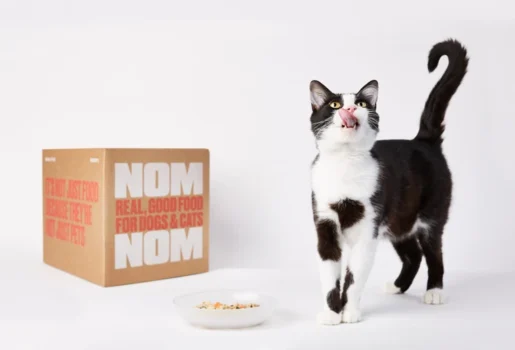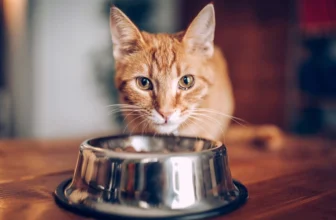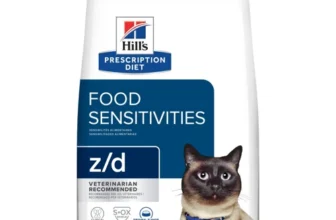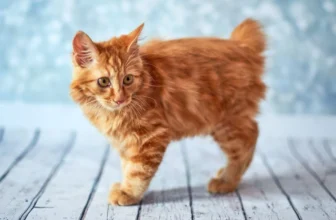The question of how often to feed your American Bobtail cat can leave many cat owners feeling perplexed. After all, finding the right balance between providing adequate nutrition and preventing obesity can be a difficult task. Should you opt for free feeding or timed meals, or is there a way to combine the best of both worlds? In this article, we’ll dive into the factors that affect feeding frequency and provide tips for choosing high-quality cat food. We’ll also explore the pros and cons of free feeding and timed meals and examine how to implement these feeding methods. So, whether you’re a new cat owner or a seasoned pro, read on to learn more about feeding your American Bobtail cat.
Understanding Your American Bobtail Cat’s Nutritional Needs
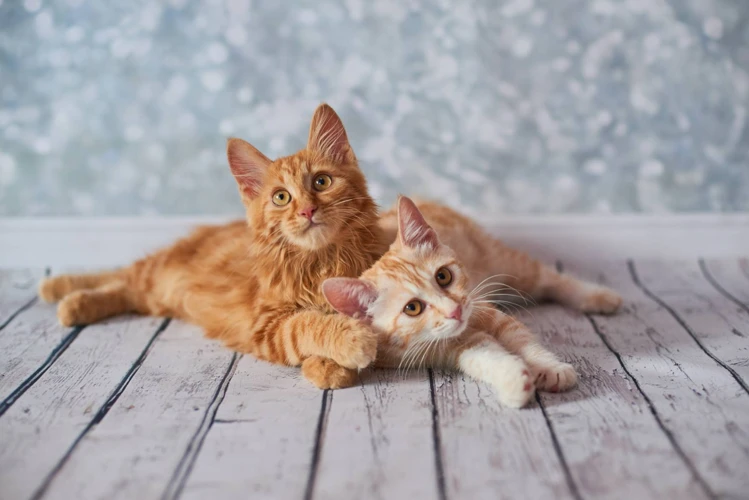
As a cat owner, it is crucial to understand your American Bobtail cat’s nutritional needs. Feeding your feline friend the right amount of high-quality food is essential for their overall health and wellbeing. To ensure that your cat is getting the nutrients they require, it’s important to consider factors that affect feeding frequency, and also choose the right type of food. Great food choices can be found in our article about top 5 cat food brands for American Bobtails and best homemade cat food recipes for American Bobtail. Let’s delve deeper into these topics to ensure your American Bobtail cat is healthy and happy.
Factors that Affect Feeding Frequency
Feeding frequency is a crucial consideration for any cat owner. The following factors affect feeding frequency:
- Age: kittens require smaller, more frequent meals than adult cats due to their higher metabolic rate.
- Activity level: cats that are more active require more food than those that are less active.
- Health: cats with certain health conditions may require a specific feeding schedule or type of food, as recommended by a veterinarian.
- Weight: overweight cats may benefit from portion-controlled feeding to help them reach and maintain a healthy weight. Learn more about the importance of portion control for American Bobtail cats.
- Dry vs wet food: dry food is generally more calorie-dense than wet food, so cats may need to eat more or less depending on the type of food they’re consuming.
It’s important to take all of these factors into account when creating a feeding schedule for your American Bobtail cat. Additionally, be sure to choose a high-quality cat food that meets your cat’s specific nutritional needs. Consider consulting with a veterinarian to determine the best feeding plan for your cat’s unique needs.
Tips for Choosing High-Quality Cat Food
When it comes to choosing cat food for your American Bobtail, there are a few tips that can help ensure you are selecting a high-quality and nutritious option for your feline friend. Consider the following:
- Look for a high-protein formula: American Bobtails require a high-protein diet to maintain their muscle mass and overall health. Look for a formula that lists a high-quality protein source, such as chicken or fish, as the first ingredient on the label.
- Avoid fillers and by-products: Fillers like corn and wheat offer little to no nutritional value for cats and can often cause digestive issues. By-products are also best to steer clear of, as they are not always made from quality ingredients like muscle meat.
- Pay attention to nutritional content: A well-balanced diet should provide your American Bobtail with the right amount of protein, fat, and essential nutrients. Look for formulas that meet the Association of American Feed Control Officials’ (AAFCO) nutrition standards.
- Consider your cat’s age and health: The nutritional needs of a kitten or senior cat may differ from that of an adult cat. Additionally, if your American Bobtail has any health issues or sensitivities, it’s important to choose a formula that caters to those specific needs.
- Stick to trusted brands: Do your research and choose a reputable brand with a good track record of producing high-quality cat food. Check out reviews and ratings from other cat owners or consult with your veterinarian for recommendations.
By following these tips, you can help ensure that the cat food you choose supports your American Bobtail’s health and wellbeing. For more in-depth guidance, check out our article on Top 5 Cat Food Brands for American Bobtails.
How Much to Feed Your American Bobtail Cat
Feeding your American Bobtail cat the right amount of food is critical to their health and wellbeing. Overfeeding can lead to obesity and health problems, while underfeeding can cause malnutrition and other health risks.
So, how much should you feed your American Bobtail cat?
The answer depends on several factors, including their age, weight, activity level, and overall health condition. As a general rule, adult American Bobtail cats need around 25-35 calories per pound of body weight per day.
Here is a helpful table that outlines the recommended daily calorie intake for American Bobtail cats of different weight ranges:
| Weight Range (lbs) | Calories per Day |
|---|---|
| 6-8 | 180-240 |
| 8-10 | 240-300 |
| 10-12 | 300-360 |
| 12-14 | 360-420 |
It’s important to note that kittens and senior cats may have different dietary needs, and you should consult with your vet to determine the appropriate calorie intake for these age groups.
When choosing cat food, it’s essential to look for formulas that contain high-quality protein sources as the primary ingredient. Avoid products that contain fillers, artificial preservatives, and by-products. Also, keep in mind that treats should not make up more than 10% of your cat’s daily calorie intake.
Tip: If you’re not sure how much to feed your American Bobtail cat, consult with your vet. They can help you create a personalized feeding plan that meets your cat’s nutritional needs.
If you’re interested in learning more about American Bobtail cat’s treat guide, check out our American Bobtail cat treat guide. If you’re a new kitten owner and want to know about feeding bobtail kittens, you can click here. Finally, if you want to learn about feeding mistakes, you can check out our guide on mistakes to avoid when feeding your American Bobtail cat.
Free Feeding: Pros and Cons
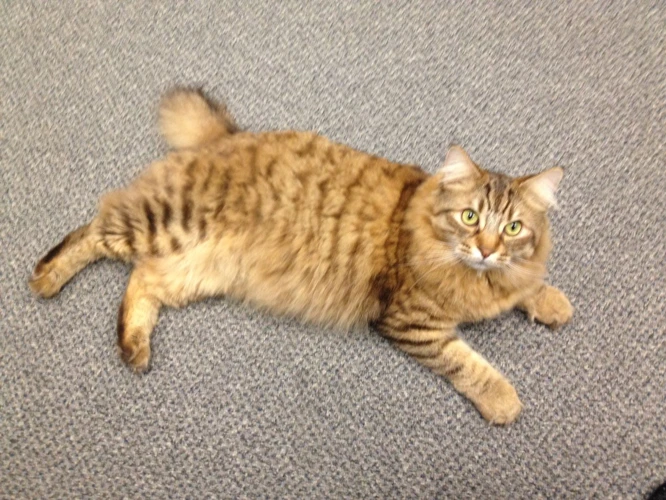
Feeding your American Bobtail cat is an essential part of their care, and you have two main options to consider: free feeding and timed meals. In this segment, we will be exploring the pros and cons of free feeding, a method that involves providing your cat with access to a constant supply of food throughout the day. While it may seem like a convenient and stress-free option, there are both benefits and drawbacks to consider before deciding if it’s the best fit for you and your feline friend. Let’s delve into the details and uncover if free feeding is the right choice for your American Bobtail cat.
Benefits of Free Feeding
One option for feeding your American Bobtail cat is free feeding, which involves keeping their food bowl full and allowing them to graze throughout the day. There are several potential benefits to this feeding method.
| Benefit | Description |
|---|---|
| Convenience | Free feeding can be a convenient option for busy pet owners who may not have the time to stick to a strict feeding schedule. |
| Prevents Overeating | Contrary to popular belief, free feeding can actually help prevent overeating in some cats. By allowing them to graze throughout the day, they may feel less inclined to binge eat and become overweight. |
| Reduces Begging | If a cat is used to having access to food whenever they want it, they may be less likely to beg for food or act hungry even when they’re not. |
| Less Stressful | Some cats may find timed meals stressful, as they may associate a set feeding time with the arrival of their owner. Free feeding allows cats to eat when they are hungry without feeling constrained. |
It is important to note, however, that free feeding does have its drawbacks as well. For example, it can make it difficult to monitor your cat’s food intake, which can lead to overeating and weight gain. Additionally, it may not be the best option for cats who are prone to overeating, as they may struggle with self-regulating their intake. Ultimately, it is up to you to weigh the pros and cons of both free feeding and timed meals in order to choose the best feeding method for your American Bobtail cat.
Drawbacks of Free Feeding
While free feeding has its advantages, it’s essential to know that there are also some drawbacks. Here are some drawbacks of free feeding that you should consider:
| Drawback | Description |
|---|---|
| Lack of portion control | Free feeding can lead to overeating, which can cause obesity and other health problems in cats that are prone to weight gain. With no restriction on food intake, your American Bobtail cat may consume more calories than it needs, which can lead to health issues. |
| Difficulty monitoring appetite | With free feeding, you cannot keep track of how much your cat is eating. Some cats may be picky eaters and will only eat when they’re hungry, while others may eat out of boredom or anxiety. It’s hard to determine when your cat is hungry, which can lead to missed meals or overfeeding. |
| Increased susceptibility to food-related illnesses | Leaving food out for prolonged periods can invite bugs, insects, and other pests that can contaminate the food bowl, causing illnesses in your pet. Additionally, if your American Bobtail isn’t eating all the food in one sitting, the food may become rancid, making them sick when they eat it later. |
| Reduced bonding time | Feeding your cat on a schedule can provide the opportunity to bond with your pet during mealtime. With free feeding, your cat may not associate you with the provision of food, which can impact the bond you share with them. |
While free feeding may seem like a convenient option, these drawbacks should be taken into consideration before deciding which feeding method works best for you and your pet.
How to Implement Free Feeding
If you have decided to try free feeding your American Bobtail cat, there are a few steps you can take to implement this feeding method effectively. Here is a list of tips to help you get started:
- Choose a Dedicated Feeding Area: Instead of leaving the food bowls all around the house, it is recommended to designate a specific area where your kitty can come and snack as she pleases. This will make it easier for you to monitor her eating habits.
- Place Multiple Bowls: Instead of filling one big bowl, place several smaller bowls or even puzzle feeders around the designated feeding area. This will help prevent your kitty from overeating in one sitting, and also encourage her to be more active by searching for her food.
- Switch to Dry Food: If you haven’t already, switch your cat to dry food, as wet or canned food is not suitable for free feeding since it can spoil quickly and attract insects. Dry food can be safely left out for longer periods of time.
- Measure the Amount of Food: Even though you will be free feeding your cat, it is important to measure the daily amount of food and divide it into smaller portions to be placed in the different bowls. This will help prevent overeating and keep your cat healthy and fit.
- Monitor Your Cat’s Eating Habits: Observe your cat’s eating habits closely during the first few days of free feeding. This will help you determine if your cat is eating too much or too little and if you need to adjust the amount of food accordingly. Keep track of how much she eats each day.
- Clean the Feeding Area Regularly: Make sure to clean the feeding area and bowls regularly to prevent the growth of bacteria, which can cause digestive issues and other health problems.
By following these tips, you can successfully implement free feeding for your American Bobtail cat and provide her with the opportunity to eat as much or as little as she needs throughout the day. However, it is important to monitor your cat’s weight and overall health regularly to ensure she is getting the proper amount of food and is not overeating.
Timed Meals: Pros and Cons
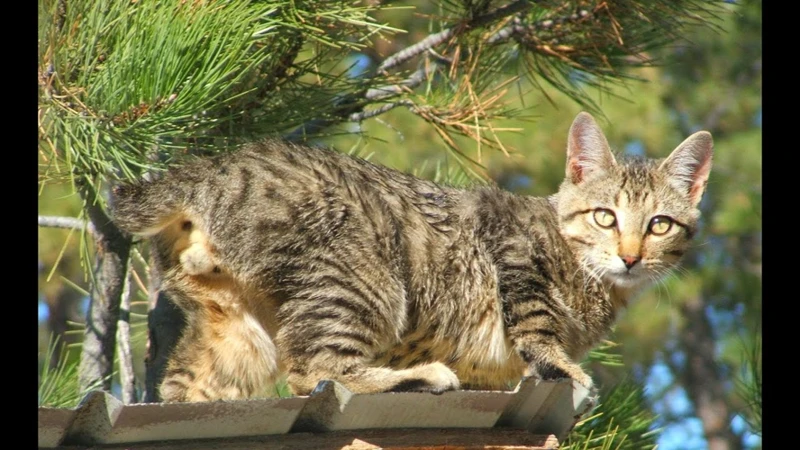
As a responsible American Bobtail cat owner, deciding how to feed your furry friend can be a daunting task. While free feeding offers convenience, implementing timed meals can offer several benefits. It’s important to understand the pros and cons of timed meals to make an informed decision. In this section, we’ll explore the advantages and disadvantages of timed meals and provide tips on how to effectively implement this feeding method. So, let’s dive in and find out if timed meals are the right choice for your American Bobtail cat!
Benefits of Timed Meals
Improved Digestion: Feeding your American Bobtail cat on a schedule can improve their digestion. When their food is spread out throughout the day, they are less likely to overeat and are better able to digest their meals. This can help prevent common gastrointestinal problems such as vomiting and diarrhea.
Prevents Obesity: Timed meals can help prevent obesity in American Bobtail cats. When left to free feed, cats have access to food at all times, which can lead to overeating and excessive weight gain. Feeding on a schedule ensures that they receive the appropriate amount of food each day, preventing excess weight gain and ultimately protecting their health.
Bonding Time: Feeding your American Bobtail on a set schedule can provide bonding time for both you and your furry friend. Consistently feeding your cat at the same time each day helps them establish a routine and can strengthen the bond between you and your pet.
Better Dental Health: Timed meals can also promote better dental health for American Bobtail cats. When food is consumed on a schedule, cats are compelled to chew their food properly, which helps keep their teeth and gums healthy. This can help prevent dental problems such as periodontal disease and bad breath.
Monitoring Food Intake: Timed meals allow you to more closely monitor your American Bobtail’s food intake. This ensures that they are not overeating or consuming too much of one particular nutrient. Monitoring their food intake can help prevent potential health issues and ensure your cat is meeting their nutritional needs.
Timed meals offer many benefits for your American Bobtail cat’s health, well-being, and overall quality of life. From improved digestion and dental health to preventing obesity and providing bonding time, a set feeding schedule can offer numerous advantages.
Drawbacks of Timed Meals
While timed feeding can be a beneficial feeding method for American Bobtail cats, there are also some potential drawbacks that should be considered. One drawback of timed meals is the reliance on the owner to consistently provide food at the appropriate times. If an owner’s schedule changes or they forget to feed their cat, it can impact the cat’s overall health and wellbeing. Another potential drawback is that cats may become overly hungry between meals, leading to begging or behavioral issues.
Table:
| Drawbacks of Timed Meals | Description |
|---|---|
| Lack of flexibility | Timed feeding requires consistency and may not allow for changes in the owner’s schedule or the cat’s needs. |
| Potential for over-hunger | Cats may become overly hungry between meals, leading to negative behavior like begging or destructive behavior. |
| Dependency on owner | Timed feeding relies on the owner to consistently provide food at the appropriate times, which can be affected by human error or changes in schedule. |
It’s important for owners to consider these potential drawbacks and ensure they are able to consistently provide meals for their American Bobtail cat if they choose to use timed feeding. However, with proper planning and consistency, the benefits of timed meals can outweigh the potential drawbacks for both the cat and owner.
How to Implement Timed Meals
Implementing timed meals for your American Bobtail cat is relatively easy, and it can help ensure that your furry friend maintains a healthy weight and doesn’t overeat. Here are some steps to follow:
- Choose the right food: Make sure you are selecting high-quality cat food that is appropriate for your cat’s age and health status. Look for food that is nutritionally balanced and meets your cat’s specific needs.
- Determine the daily amount: Figure out how much food your cat needs each day based on their age, weight, and activity level. This information is typically available on the cat food packaging or can be provided by your veterinarian.
- Divide the daily amount: Split the daily amount into smaller portions that can be fed throughout the day. For example, if your cat needs 1 cup of food per day, you could divide it into two 1/2 cup meals or three 1/3 cup meals.
- Establish a feeding schedule: Determine which times of day you will be feeding your cat and stick to that schedule as closely as possible. Cats thrive on routine, so consistency is key.
- Monitor your cat’s intake: Keep an eye on how much your cat is eating at each meal and make adjustments as needed. If your cat is consistently leaving food behind, you may be feeding too much. If they are finishing their food quickly and then begging for more, you may need to increase the portion size.
It can take some time for your cat to adjust to a timed feeding schedule, so be patient and consistent. If you have multiple cats, you may need to separate them during meal times to ensure that each cat is getting the appropriate amount of food. Always remember to provide plenty of fresh water and avoid giving your cat human food or treats outside of their regular meals. By implementing timed feeding, you can help promote your cat’s overall health and well-being.
Combining Free Feeding and Timed Meals
As a cat owner, you may find yourself torn between the convenience of free feeding and the structure of timed meals. The good news is that you don’t have to choose just one. Combining free feeding and timed meals can offer the best of both worlds for both you and your American Bobtail cat. But how do you implement both methods together without causing confusion or overfeeding? Let’s explore some tips and strategies for making the combination approach work for you and your feline friend.
How to Use Both Methods Together
It’s possible to use both free feeding and timed meals together to provide your American Bobtail cat with the best possible feeding experience. However, it requires some careful planning and consideration to ensure that you use each method appropriately. Here are some tips to help you use both feeding methods together:
1. Determine the Right Ratio: You should determine the ratio of free feeding to timed meals that will work best for your cat. A good place to start is with 75% free feeding and 25% timed meals, but you may need to adjust this depending on your cat’s individual needs.
2. Stick to a Routine: Consistency is important, so you should stick to a regular feeding routine. This means feeding your cat at roughly the same times each day and in the same location.
3. Monitor Your Cat’s Eating: Keep an eye on your cat’s eating habits to ensure that they are getting enough food. If you notice that your cat is eating too much or too little, you may need to adjust the amount of food that you are giving them.
4. Use Separate Bowls: It’s important to use separate bowls for free feeding and timed meals. This will help your cat differentiate between the two types of feeding and ensure that they are not overeating.
5. Choose the Right Food: Make sure that you are providing your cat with high-quality cat food that meets their nutritional needs. Read the labels carefully to ensure that the food is appropriate for your cat’s age, weight, and activity level.
6. Be Patient: It may take some time for your cat to adjust to a new feeding routine. Be patient and consistent, and your cat will learn to adapt.
7. Adjust as Needed: Finally, be prepared to adjust your feeding routine as needed. Every cat is different, so you may need to make changes to your approach to ensure that your cat is healthy and happy.
Tips for a Smooth Transition
When transitioning your American Bobtail cat from free feeding to timed meals or vice versa, there are several tips that can help make the process smoother and less stressful for you and your pet. Here are some tips to keep in mind:
| Tip | Description |
|---|---|
| Gradual Adjustment | Whether you’re transitioning to free feeding or timed meals, do it gradually. Start by making small changes to your cat’s feeding schedule over a period of a few weeks to avoid any sudden disruptions to their routine. |
| Stick to a Routine | Once you’ve decided on a feeding schedule, stick to it as closely as possible. Consistency is key in helping your cat adjust to the new routine. |
| Monitor Your Cat’s Health | Keep an eye on your cat’s weight and overall health as you make the transition. If you notice any changes, adjust your feeding schedule as needed. |
| Provide Plenty of Water | It’s important to ensure that your cat has access to plenty of fresh water throughout the day, regardless of whether you choose free feeding or timed meals. |
| Use Treats for Positive Reinforcement | If your cat is resistant to the new feeding schedule, try using treats as positive reinforcement. Give them a small treat after they finish their meal as a reward. |
| Be Patient | Transitioning your cat to a new feeding schedule can be a slow process, so it’s important to be patient and persistent. With time and consistency, your cat will adjust to their new routine. |
By following these tips, you can help ensure a smooth transition for your American Bobtail cat as you switch from free feeding to timed meals, or vice versa. Remember to be patient, monitor your cat’s health closely, and provide plenty of positive reinforcement along the way. With time, your cat will adjust to their new feeding routine and thrive on their healthy diet.
Conclusion
In conclusion, feeding your American Bobtail cat requires consideration of various factors such as age, weight, activity level, and overall health. It’s important to choose a high-quality cat food that meets your pet’s dietary needs as well as your lifestyle. Whether you choose free feeding or timed meals, both methods have advantages and disadvantages that should be considered. It’s also worth considering a combination of both methods, as this can provide a more balanced approach to feeding that ensures your cat’s needs are met throughout the day while also preventing overeating.
When free feeding, it’s crucial to monitor your cat’s food intake and ensure they don’t become overweight or undernourished. This method can provide convenience for busy pet owners and reduce the stress of establishing mealtime routines. However, it may not be suitable for cats with certain health conditions or those prone to overeating.
On the other hand, timed meals provide more structure and control over your cat’s food intake, reducing the risk of overeating and obesity. This method is ideal for most cats and provides a more natural approach to feeding that mimics their instincts. However, it can be time-consuming and require more effort from pet owners to establish a regular feeding routine.
Combining both methods can provide the best of both worlds and help maintain a healthy balance of food intake throughout the day. It’s important to make a gradual transition when introducing either method to your cat, and to never make sudden changes to their diet or routine.
Overall, feeding your American Bobtail cat is a crucial part of their overall health and well-being. By considering their individual needs and implementing a feeding routine that works for both you and your pet, you can ensure they receive the proper nutrition they need to thrive.
Frequently Asked Questions
How often should I feed my American Bobtail cat?
The general recommendation is to feed your American Bobtail cat twice a day.
How much should I feed my American Bobtail cat?
The amount you should feed your American Bobtail cat depends on their age, activity level, and weight. As a general guideline, it is recommended to feed them 3-4 ounces of food per meal.
Can I leave food out for my American Bobtail cat to eat whenever they want?
Yes, you can leave food out for your American Bobtail cat to eat whenever they want. This is known as free feeding.
What are the benefits of free feeding my American Bobtail cat?
The benefits of free feeding include the convenience of always having food available for your cat, allowing them to graze throughout the day, and potentially preventing overeating as they learn to self-regulate their food intake.
What are the drawbacks of free feeding my American Bobtail cat?
The drawbacks of free feeding include the risk of your cat becoming overweight or obese, as well as the potential for food to spoil or attract pests if left out for too long.
Can I switch from free feeding to timed meals?
Yes, you can switch from free feeding to timed meals. However, it is important to make the transition gradually to avoid upsetting your cat’s digestive system or causing them stress.
What are the benefits of timed meals for my American Bobtail cat?
The benefits of timed meals include helping your cat maintain a healthy weight, ensuring they are not overeating or undereating, and creating a structured routine and sense of predictability for your cat.
What are the drawbacks of timed meals for my American Bobtail cat?
The potential drawbacks of timed meals include the inconvenience of having to stick to a strict feeding schedule and the potential for your cat to become stressed or anxious if they are unable to access food when they want it.
How can I combine free feeding and timed meals?
You can combine free feeding and timed meals by leaving out a small amount of food for your cat to graze on throughout the day, while also providing scheduled meals at specific times.
What should I do if my American Bobtail cat is not eating enough?
If your American Bobtail cat is not eating enough, it is important to consult with your veterinarian to rule out any underlying health issues. Additionally, you may want to experiment with different types of food or feeding methods to see if there is a solution that works better for your cat.

